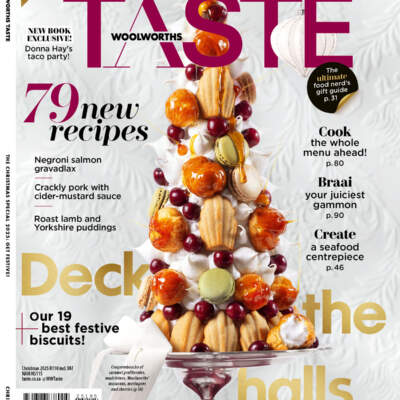Pinotage: our national treasure
Pinotage is as proudly South African as braaivleis and boerewors, says Cape Wine Master Allan Mullins. Drink the good stuff and you’ll see why our homegrown varietal deserves the accolades.
In 1925 Professor Abraham Perold crossed Pinot Noir and Cinsault (formerly known as Hermitage) to produce Pinotage. I call it something of a “wild love child” between the two varietals: Pinot Noir produces high-quality wines but can be fickle and difficult to work with in the vineyard and cellar (that’s why they call it the heartbreak grape), while Cinsault is easy to work with and produces big yields. Since the first commercial planting of Pinotage at Bellevue wine estate in 1953, it aroused controversy and garnered both lovers and haters. Some early examples were clumsy with an acetone flavour but, with perseverance, a more elegant style developed, the quality improved , the quality improved, and since the early nineties Pinotage has stirred great interest locally and abroad. There's never been a better time to open a bottle and appreciate it's finer points.
WOOLWORTHS BEYERSKLOOF PINOTAGE 2015:
Beyers Truter, a much loved legend of South African wine, made his name at Kanonkop before founding Beyerskloof in 1988. His son, Anri, now makes the wine under his father’s watchful eye. Pinotage may not be the only wine at Beyerskloof but it will always be the favoured one, with people coming from far and wide to enjoy the Pinotage burger at the Red Leaf Bistro.
Look for: Juicy black berry flavours and a well-balanced finish.
Match with: Springbok shanks with creamy mash and parsley.
WOOLWORTHS BELLEVUE PINOTAGE 2013:
Bellevue owner and viticulturist Dirkie Morkel calls Bellevue “the cradle of Pinotage”, as it was his uncle PK Morkel who planted South Africa’s first commercial Pinotage in 1953 and, in 1959, won the trophy for the best wine on the South African Young Wine Championship, putting Pinotage on the map locally and internationally.
Look for: Strawberry, raspberry, plum, chocolate and vanilla, with a supple mouthfeel and silky tannins.
Match with: A slow-roasted pork belly roasted in milk and sage.
WOOLWORTHS DIEMERSFONTEIN COFFEE PINOTAGE 2014:
Coffee Pinotage has become a phenomenon, with new labels hitting the shelves faster than you can say “Barista, make that a double”. And it all started at Diemersfontein, where winemaker Bertus Fourie made the first incarnation in 2001. The distinct coffee aroma of the wine is thanks to the selection and handling of the grapes, as well as the type of oak barrel used to age it.
Look for: Flavours of coffee, dark chocolate, plums and ripe black cherries.
Match with: Barbeque-spiced grilled lamb chops with sweet-potato mash
WOOLWORTHS SIMONSIG PINOTAGE 2014:
Simonsig is a noble aristocrat among Stellenbosch wine farms. The Malans have been in South Africa since 1688 and the farm is currently run by Johan and François, sons of the late Frans Malan, a renowned winemaking pioneer.
Look for: Fragrant ripe plum and red berry fruits. Richly textured, full-bodied, elegant yet complex.
Match with: A traditional bobotie with brown rice and lentils.
WOOLWORTHS DIEMERSFONTEIN PINOTAGE RESERVE 2014:
Twelve years ago this Wellington estate hosted its first Pinotage on Tap festival, which was voted “best wine event in the world” at the 2014 Drinks International Tourism Awards in London.
Look for: Great balance between the fruit and oak will allow for at least 10 years’ ageing.
Match with: Free-range rack of lamb with a rosemary-and-cranberry crumb.
WOOLWORTHS STELLAR ORGANICS NO SULPHUR ADDED (NSA) PINOTAGE 2015:
The cool vineyards of Stellar Organics, a large winery outside Vredendal in Namaqualand, produce the most organic Fairtrade wines in South Africa, as well as the most no-sulphur-added wines in the world.
Look for: Bright ruby, plum and cherry tobacco, with a hint of vanilla from light oaking.
Match with: A slow-cooked lamb neck potjie



Comments